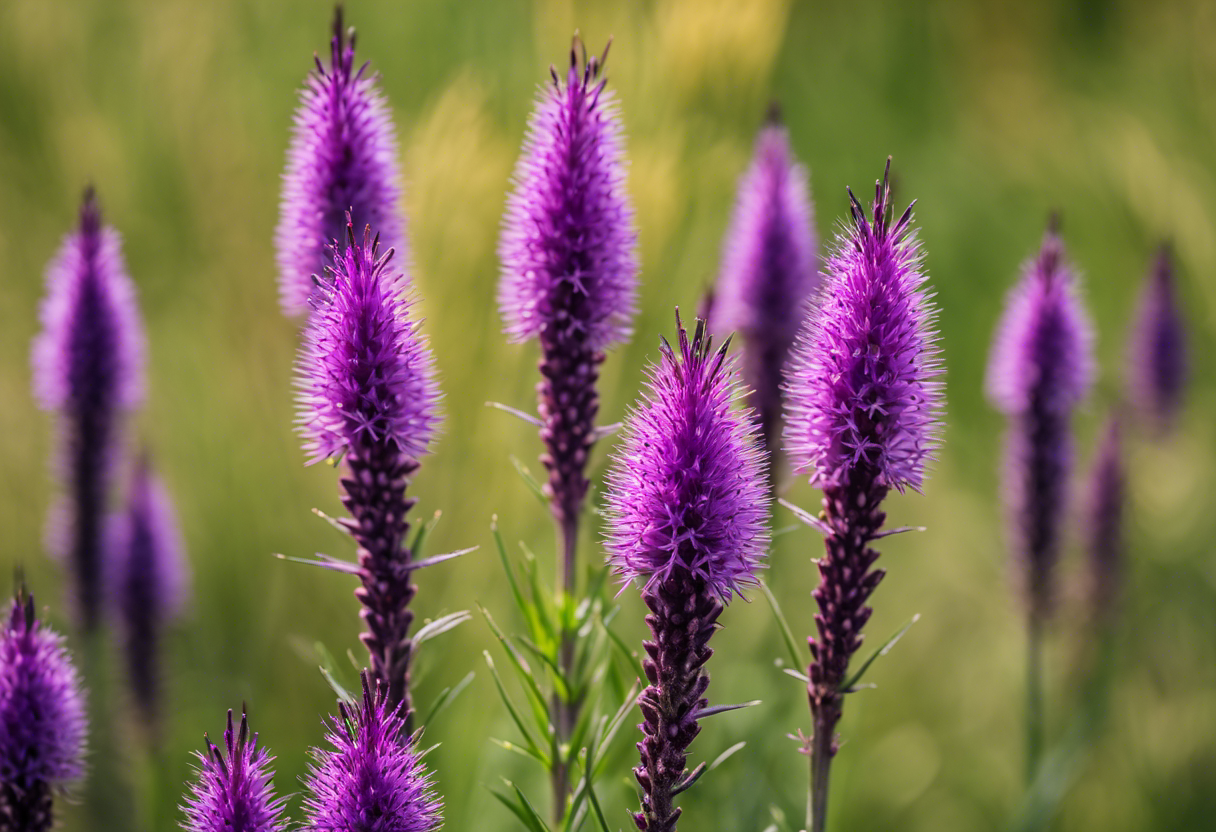Ever stumbled upon a plant that just took your breath away and you wanted to know more about it? Well, I had a similar experience with Liatra kłosowa – Liatris spicata. Let me tell you, this beauty is not just about the looks; there’s so much more to it.
In the following sections, we’ll dive deep into the world of this fascinating plant. From its origin and significance to how one can grow and care for it – we’ve got it all covered! So buckle up, folks. We’re in for an intriguing journey through nature’s marvels. “Keep reading about A Detailed Look at Zobacz wątek – Liatra kłosowa – Liatris spicata”
Key Takeaways
- The blog post provides an in-depth look at Liatris spicata, also known as Blazing Star or Gayfeather.
- It discusses the plant’s origin, characteristics, and growth conditions.
- The post highlights its medicinal uses and significance in garden landscapes.
- It also covers how to care for and propagate this perennial plant.
- Lastly, it addresses common problems and diseases associated with Liatris spicata.

What is Liatris Spicata?
Let’s dive right into the world of Liatris Spicata, a fascinating perennial plant. Known by many as the Blazing Star or Gayfeather, this beauty hails from North America. It’s got a few varieties, each with its own unique flower characteristics.
Origin and Classification
The origin of Liatris Spicata traces back to the prairies and meadows of North America. It’s part of the Asteraceae family, which is quite large and diverse.
This botanical classification places it among some well-known plants like sunflowers and daisies. But don’t be fooled, our star here has its own unique charm.
Physical Characteristics
When it comes to the physical attributes of Liatris Spicata, we’re talking about a tall, slender plant that can reach up to 4 feet in height. Its leaves are long and narrow, creating an elegant silhouette.
But what really steals the show are its flowers. They bloom in dense spikes from top to bottom – quite unusual compared to other flowering plants! These vibrant purple flowers give it another nickname – ‘the purple poker’.
Varieties of Liatris Spicata
There are several varieties of Liatris Spicata out there, each with their own unique features. The ‘Floristan White’ for example, stands out with its pure white flowers.
Then there’s ‘Kobold’, a popular cultivar known for its compact size and deep purple blooms. Each variety adds a different touch to your garden landscape, making Liatra kłosowa – Liatris spicata a versatile choice for any green thumb!
Why is Liatris Spicata Important?

The Importance of Liatris Spicata can’t be overstated. This plant, also known as Liatra kłosowa – Liatris spicata, packs a punch in terms of ecological significance, medicinal value, and ornamental use.
Ecological Significance
First off, let’s talk about the ecosystem role of Liatris spicata. This plant is a real team player in the biodiversity game. It provides food and habitat for various insects and birds, contributing to a balanced ecosystem.
Moreover, it plays a significant part in pollination. The tall spikes of purple flowers are like fast food joints for bees and butterflies! So yeah, the environmental impact of Liatris spicata is pretty rad!
Medicinal Uses
Moving on to the medicinal properties of Liatris spicata, this plant has been used in traditional medicine for ages. It’s like nature’s pharmacy! Native Americans used it to treat snake bites and other ailments.
In modern medicine, research suggests that it may have anti-inflammatory properties. So next time you’re feeling under the weather, maybe some Liatra kłosowa – Liatris spicata could do the trick!
Ornamental Uses
Finally, let’s not forget about the decorative use of Liatris spicata. With its tall spikes covered in vibrant purple flowers, this plant adds a pop of color to any garden or landscape.
Its unique aesthetic appeal makes it a favorite among gardeners and landscapers alike. Whether you’re looking to spruce up your backyard or add some flair to your front yard, Liatra kłosowa – Liatris spicata might just be what you need!

Growing and Caring for Liatra kłosowa – Liatris spicata
Let’s dive into the fascinating world of growing Liatris Spicata. It’s not rocket science, but it does require some know-how.
Ideal Conditions for Growth
First things first, you gotta understand what makes these beauties tick. The optimal conditions for Liatris Spicata are full sun exposure and well-drained soil. They’re pretty hardy and can tolerate a range of soil types, from sandy to clayey. But they do have a sweet spot for slightly acidic to neutral pH levels.
Planting Process
Now, onto the fun part – planting! Here’s how to plant a Liatris spicata correctly. Start by digging a hole about 1-2 inches deep. Place your bulb in the hole with the pointy end facing up (it’s like planting a tiny unicorn horn!). Cover it back up with soil, pat it down gently, and give it a good drink of water.
Maintenance and Care Tips
Once your Liatris spicatas are all settled in their new home, they’ll need some TLC to stay healthy. Regular watering is key during dry periods, but be careful not to overwater – nobody likes soggy feet! Also, remember that these plants are perennials, so they’ll go dormant in winter but bounce back in spring. Just let nature do its thing!
Common Problems with Liatris Spicata
Gardening is a joy, but it’s not always a walk in the park. Especially when you’re dealing with Liatra kłosowa – Liatris spicata. This beauty can sometimes give you a run for your money with some common problems.
Diseases and Pests
First off, let’s talk about diseases. Diseases affecting Liatris Spicata can be quite sneaky. You might notice yellowing leaves or stunted growth. These are signs that something’s up.
Now, onto pests. Pests on Blazing Star are another headache altogether. If you see holes in the leaves or flowers, it’s likely you’ve got some unwelcome guests munching away.
Overcoming Common Issues
But don’t fret! There are ways to tackle these issues head-on. For diseases, regular watering and proper spacing can do wonders.
As for pests, introducing natural predators into your garden like ladybugs or spiders can help keep them in check. Remember, prevention is better than cure! So keep an eye out for early signs of disease in Liatris and act swiftly to nip any pest damage on Liatris in the bud.
With these tips under your belt, overcoming common Liatris problems should be a breeze!

To Wrap Up
So, we’ve taken a fun-filled journey through the world of Liatra kłosowa – Liatris spicata, haven’t we? From its unique structure that’s as quirky as a toddler wearing dad’s oversized shoes, to its vibrant colors that could give a rainbow a run for its money.
Remember, gardening is like baking – the right ingredients make all the difference. So why not add this little firecracker to your garden mix? It might just be the cherry on top!


